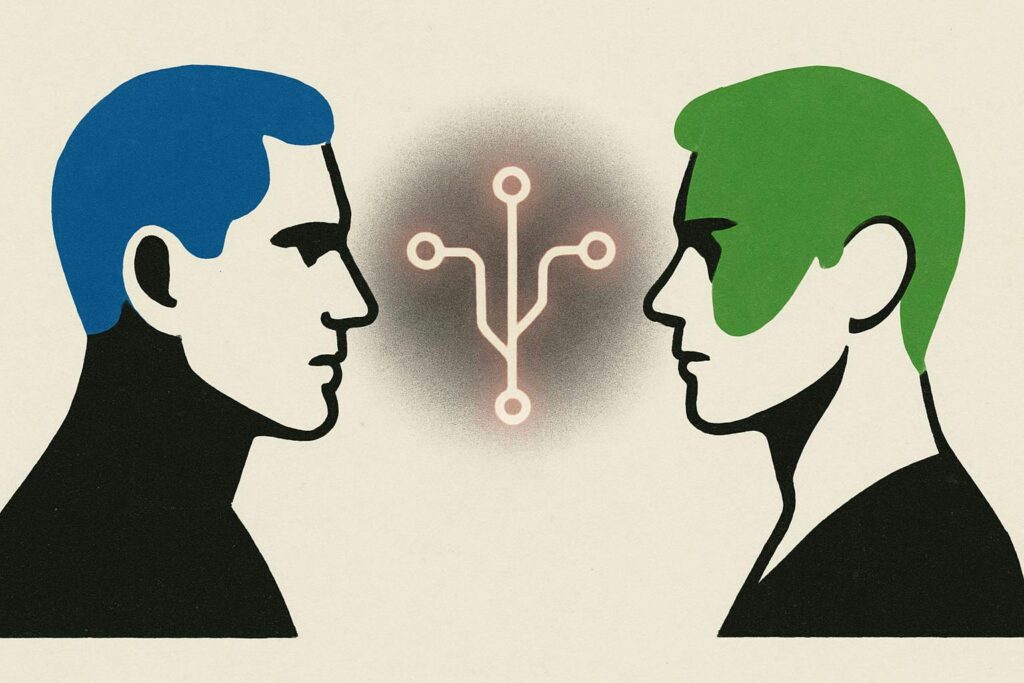Microsoft’s recent decision to integrate both OpenAI and Anthropic’s AI models into its Copilot tool marks a significant shift in the landscape of artificial intelligence and automation. While Copilot has primarily leveraged OpenAI’s capabilities across various Microsoft applications like Word and Outlook, the addition of Anthropic’s Claude Sonnet 4 and Claude Opus 4.1 builds a new paradigm of choice that has implications for small and medium-sized businesses (SMBs) and automation specialists.
At its core, the emergence of multiple AI tools represents a growing trend toward diversification in technology adoption. Historically, businesses were often locked into singular vendor ecosystems, which limited their flexibility and potential for innovation. The introduction of choice, particularly in a crucial tool such as Copilot, enables enterprises to tailor their solutions based on specific needs, which can enhance ROI and ensure they utilize the most effective technology for their operations.
When comparing OpenAI and Anthropic, several factors come into play. OpenAI is well known for its robust natural language processing capabilities and has established a strong reputation for reliability. This makes it a strong candidate for businesses that prioritize user-friendly interfaces and seamless integration into existing workflows. The extensive documentation and community support surrounding OpenAI also facilitate easier onboarding and effective usage, which can be a critical advantage for SMBs with limited resources.
On the other hand, Anthropic’s models are designed with an emphasis on ethical considerations and safety in AI, which can be particularly appealing to companies concerned about ethical AI usage. The Claude models, developed by Anthropic, focus on understanding and addressing the potential biases that other AI models may hold. Thus, for businesses where ethical implications are paramount, such as those in healthcare or finance, Anthropic offers an attractive alternative.
Cost considerations are also critical in evaluating these platforms. OpenAI typically operates on a usage-based pricing model, which can lead to significant costs depending on the volume of queries processed. Anthropic, while newer to the market, is adopting a similar strategy, but its focus on niche applications may allow for more targeted pricing structures. SMB leaders should conduct a thorough cost-benefit analysis to fully understand the long-term implications of each platform, considering both direct costs and the potential ROI generated through improved efficiencies or customer engagement.
The scalability of an AI tool is a core consideration for businesses looking to grow. OpenAI’s established architecture and broader user base suggest it may be more suited for scaling at an enterprise level. However, Anthropic’s specialization could provide scalability in a different context, promoting deeper integrations in specific sectors where nuanced understanding and tailored responses are essential.
Microsoft’s strategy to diversify its AI offerings is indicative of a broader trend across the tech landscape, which has increasingly favored flexibility and integration over loyalty to a single provider. Companies are seeking to combine strengths from competing platforms to create a more robust and adaptive ecosystem. This shift is not limited to Microsoft; other tech giants are also forging partnerships with diverse AI developers, blurring the lines between competitors and collaborators. Such dynamics underscore the increasingly intertwined nature of cloud services and AI development.
For automation specialists, the implications of this shift are noteworthy. Tools such as Zapier and Make have established themselves as leaders in the automation arena by enabling users to create workflows that interconnect various applications. However, the addition of AI capabilities through platforms like OpenAI and Anthropic could revolutionize automation practices, enabling more sophisticated, context-aware actions that improve productivity. As AI becomes a central component of automation platforms, understanding the comparative advantages and limitations becomes essential.
The integration of AI into these automation tools presents potential challenges as well as opportunities. Businesses may struggle with adopting new paradigms of efficiency that incorporate AI, requiring training and a cultural shift within organizations. However, the potential reward is significant—organizations that can effectively deploy AI in their automation workflows stand to reap substantial efficiencies and cost savings.
In conclusion, the competition between OpenAI and Anthropic—and the increasing choice in AI platforms offered by companies like Microsoft—indicates a vital trend for SMB leaders and automation specialists. Businesses must carefully assess the strengths and weaknesses of each offering, weighing factors such as cost, scalability, ethical considerations, and integration capabilities. Ultimately, taking a strategic approach to AI adoption can unlock new levels of innovation and efficiency.
FlowMind AI Insight: As the data landscape evolves and technology becomes increasingly integral to operational success, leaders must prioritize adaptable AI solutions tailored to their unique business needs. Engaging with multiple providers not only mitigates risk but can also enhance the overall efficacy of automation initiatives that drive growth and competitive advantage.
Original article: Read here
2025-09-24 18:35:00

